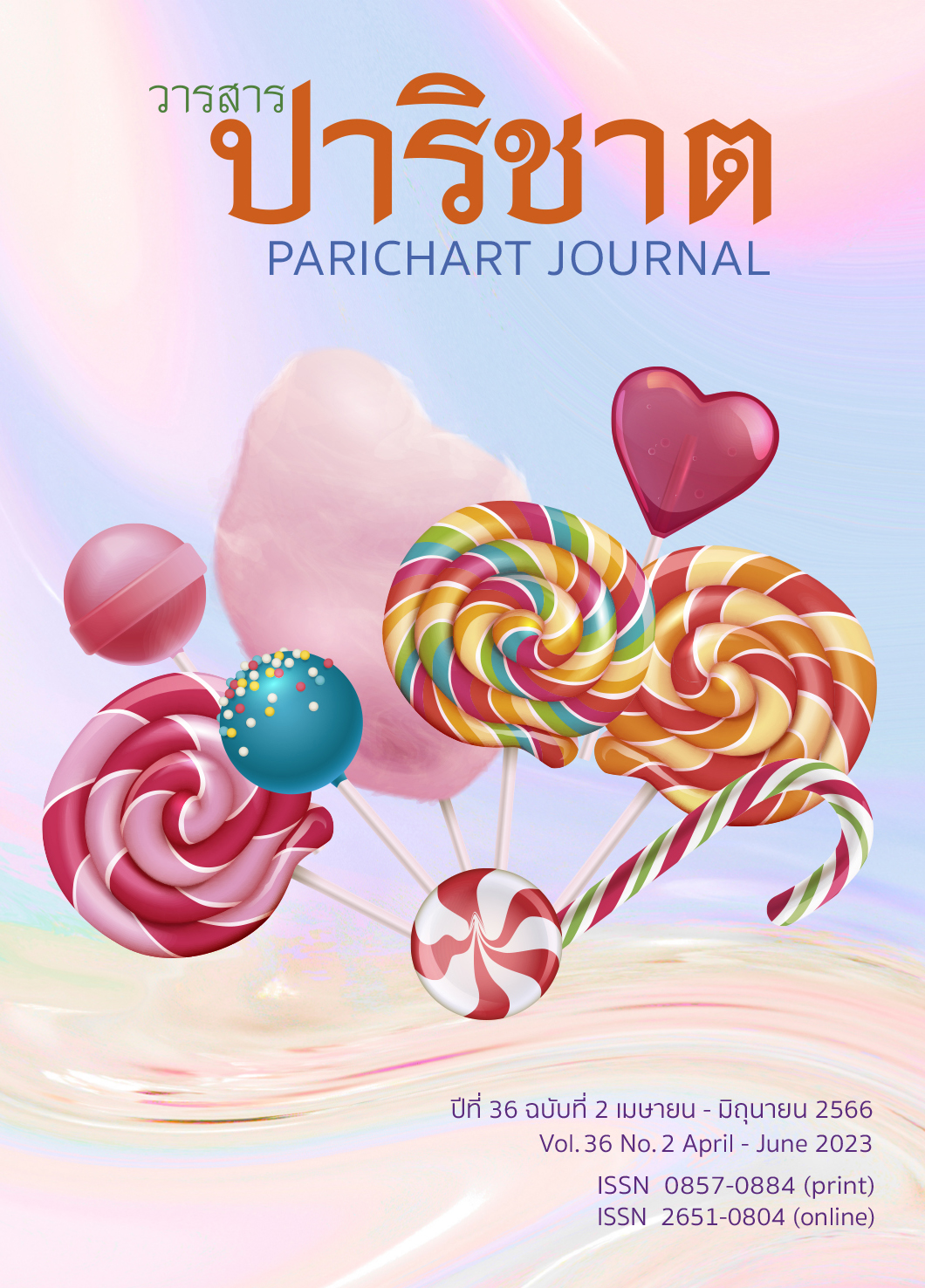An Exploration of the Opinions towards the Use of the EWA Application for Improving English Listening Ability of Grade 8 Students at an English Medium Instruction School in Samut Sakhon Province
Main Article Content
บทคัดย่อ
The purpose of this study was to explore what Grade 8 students’ opinions about the use of the EWA application for improving English listening ability at an English as Medium Instruction (EMI) School in Samut Sakhon Province. The study's sample group included 55 students in Grade 8 during the first semester of the academic year 2021 at an EMI school in Samut Sakhon Province. The research instruments were EWA application and a questionnaire towards learning via the EWA application. The findings revealed that the opinions of Grade 8 students at an EMI school in Samut Sakhon Province towards the use of the EWA application for improving English listening ability were positively high (M = 3.95). When considering each aspect, it found that the statements, images and videos of the EWA application are correlated with each content of a lesson and the EWA application helps practice students’ English listening for comprehension, were at a highest level (M = 4.73 and 4.51).
Article Details

อนุญาตภายใต้เงื่อนไข Creative Commons Attribution-NonCommercial-NoDerivatives 4.0 International License.
เอกสารอ้างอิง
Rost, M., & Rubin, J. (1994). A review of second language listening comprehension research. Modern Language Review, 78(2), 199-221. https://doi.org/10.1111/j.1540-4781.1994.tb02034.x.
Oxford, R. (1993). Research update on teaching L2 listening. System, 21(2), 205-211. https://doi.org/10.1016/0346-251X(93)90042-F.
Nation, I. S. P., & Newton, J. (2008). Teaching ESL/EFL listening and speaking. Routledge. https://doi.org/10.4324/9780203891704.
Doff, A. (2001). Teaching English: A training course for teachers (14th ed.). Cambridge University Press.
Hamouda, A. (2013). An investigation of listening comprehension problems encountered by Saudi students in the EL listening classroom. English Language Teaching, 2(2), 113-155.
Glisan, E. W. (1985). The effect of word order on listening comprehension and pattern retention. An experiment in Spanish as a Foreign Language, 35(3), 443-472. https://doi.org/10.1111/j.1467-1770.1985.tb01087.x.
Maya, V. (2021). 11 Barriers to Effectives Listening and Tips to Overcome Them. Customers First Academy. https://customersfirstacademy.com/barriers-to-effective-listening/.
Ur, P. (1984). Teaching listening comprehension. Cambridge University Press.
Nicholas, L. N. (1988). Teaching Listening Comprehension. English Teaching Forum, 26(1), 19-22.
Saricoban, A. (1999). The teaching of listening. The Internet TESL Journal, 5(12). http://iteslj.org/Articles/Saricoban-Listening.html.
Soundsory. (2018). What’s the difference between hearing and listening? Soundsory. https://soundsory.com/whats-the-difference-between-hearing-and-listening/.
Wilson, J. J. (2008). How to teach listening. Pearson Education Limited.
Angwattanakul, S. (1992). Methodologies for teaching English as a foreign language. Chulalongkorn University.
Sriphuangmalai, R., & Thienpermpool, P. (2018). Development of English listening comprehension achievement using Podcast for Prathomsuksa six students at Nongkungsalanum tiangwittayakorn School. [Master’s Thesis, Silpakorn University].
Srikasang, W. (2017). Development of the English learning achievement of listening-speaking 2 with Hello English Program on mobile phone. [Master’s Thesis, Panyapiwat Technological College].
Pumjit, P., & Leungnapha, A. (2019). Using application for English listening development. [Master’s Thesis, Suan Sunanda Rajabhat University].
Pinyonatthagarn, D. (1995). Foreign languages for Thai: Why and how? Suranaree Journal of Science and Technology, 2, 203-206.
Sriwithas, T., Nithitwaraphakun, K., & Akraratana, P. (2019). Learning management through the application of YouTube-based videos with Communicative Language Teaching approach to improve English listening and speaking skills of Grade 9 students. Academic Journal of Phranakhon Rajabhat University, 11(2), 219-233.
Shiri, S. (2015). The application of podcasting as a motivational strategy to Iranian EFL learners of English. A view toward listening comprehension, 6(3), 155-165. https://doi.org/10.7575/aiac.alls.v.6n.3p.155.
Takaesu, A. (2017). TED Talks as an Extensive Listening Resource for EAP Students 1. https://www.semanticscholar.org.
Putri, M. L., & Islamiati, A. (2018). Professional journal of English education. Teaching Listening Using Duolingo Application, 1(4), 1-6. https://doi.org/10.22460/project.v1i4.p460-465.
Pornpilast, S. (2022, May 30). PDPA DOs and DON’Ts. PDPA Thailand. https://pdpa.online.th/pdpa-dos-donts/.
Wongrattana, C. (2007). Techniques for using statistics for research. Taineramitkij Inter Progressive.
Saiyot, L., & Saiyot, A. (1995). Techniques for educational research. (4th ed.). Suweeriyasan.


